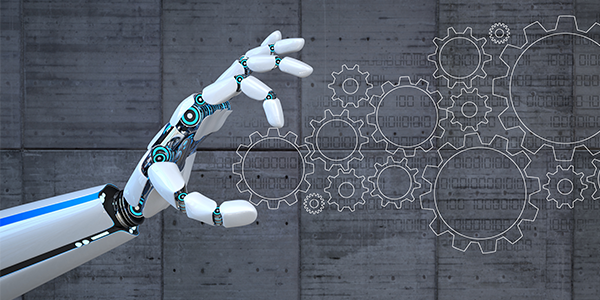There is no question that Robotic Process Automation (RPA) is a powerful tool and is staged for overwhelming growth in the near future. The reasons for this budding popularity are numerous and clear, but they do come at a cost, both tangible and intangible.
RPA employs the use of software to automate primarily data-driven tasks (though their applications are expanding as AI continues to develop). The result is appealing to businesses that are actively looking for ways to increase their efficiency and their return on investment (ROI).
Read: How Robotic Process Automation Can Transform HR
Because RPA can be easier and less expensive to implement than a traditional workforce many businesses view the benefits as overwhelming and essentially foolproof. This rush to implement can lead to oversites on the true cost of RPA. To help you avoid any missteps that could inflate your cost of implementing RPA, we’ve put together this handy guide.
Tangible Cost
One of the primary appeals of RPA is the money-saving potential it offers. If it didn’t make financial sense to implement, businesses simply wouldn’t. However, there are numerous tangible costs that often get overlooked and can lead to implementation being more expensive than initially thought. In addition, these costs can have a very broad variation depending on the scope of the implementation and should ultimately be evaluated based on total cost of ownership as it relates to the ROI.
For example, implementing a single bot to replace the data entry tasks of a single employee could have a one-time cost of as little as $5,000 with annual savings of $50,000 (salary, taxes, benefits, etc.) by replacing a single employee.
Larger and more complex implementations should aim for a similar 5-10x ROI. It is not uncommon for large deployments of 500 bots with the goal of replacing 1,000 employees to save a company $150 million per year. This assumes a first year fully loaded cost of $15 million.
These costs fall into three broad categories—cost of development, operating costs, and infrastructure costs. While some of these costs may be a one-time ordeal, others will be ongoing. It’s important to be aware of and assess both types before you implement RPA.
Lack of Harmony
In the excitement and rush to begin implementing RPA, confusion and lack of compatibility can occur. Often, this isn’t because the automation processes themselves are ill-conceived or poorly executed; it’s because they are being implemented as individual systems rather than as a cohesive whole. This leads to more resources and workers being required, which, in turn, can dramatically increase cost.

Forgotten Future
While it’s entirely possible to implement RPA and have immediate success, it is less likely that success will have longevity if an appropriate plan is not in place. As business and technology change, RPA will have to evolve to stay relevant. To keep up, constant improvements and upgrades must occur. Having a plan—and a budget—in place for these future needs will save you from unexpected yet inevitable costs.
Performance and Support
The term “automation” may spark thoughts of completely autonomous machines whirring 24/7/365, and while this is partly true, even robots need a boss. You will have to pay an expert or a team of experts to monitor the system, measure performance, ensure everything is running correctly and develop ways to further increase efficiency.
Testing
You will have to implement a testing structure to make sure everything is operating properly before, as well as after, implementation. If there is a flaw in one system, it could bottleneck and derail the entire process of automation.
Intangible Cost
As you implement RPA with efficiency and cost-savings in mind, you will inevitably disrupt the standard operations of your business. The intangible or non-monetary cost is generally human.
Reduction in Workforce
The word automation carries with it several connotations, foremost among which is the idea that it replaces human workers. This is true, for better or for worse. When implementing RPA, you will need to have a plan in place to reduce the disruption this can cause. The cost is the potential unrest, unhappiness and workflow interruption among employees.
Adaptation
New systems and employees newly-freed from mundane tasks mean you will have to facilitate adaptation on multiple fronts. Current employees must learn to coexist and work both with and alongside the new technology. New experts may have to be recruited to properly monitor, maintain and upgrade the system. Employees formerly stuck doing repetitive, mundane tasks will need to adjust to contributing in more thoughtful, creative ways. The business as a whole will have to adapt in numerous ways and doing so will present a steep learning curve.
Automation is the trend of the present and the way of the future, but it comes with many significant challenges and costs. Being aware of those difficulties allows you to prepare for them before implementing RPA, giving you an advantage when those costs do present themselves.
This article originally appeared in Advanced Resources' Financial Insights Magazine.




